This article was medically reviewed by Lacy Windham, MD. Lacy Windham, MD, is a Board-Certified Obstetrician & Gynecologist in Cleveland, Tennessee. Dr. Windham attended medical school at the University of Tennessee Health Science Center in Memphis. Her residency was completed at Eastern Virginia Medical School in Norfolk, Virginia. She was the recipient of multiple awards during her residency training, including Most Outstanding Resident in Maternal Fetal Medicine, Most Outstanding Resident in Oncology, Most Outstanding Resident Overall, and Special Award in Minimally Invasive Surgery.
There are 23 references cited in this article, which can be found at the bottom of the page.
This article has been viewed 295,027 times.
Experts say vaginitis may be caused by a bacterial infection, yeast infection, or sexually-transmitted infection (STI), and the best treatment for you will depend on the cause.[1] Vaginitis is inflammation in your vagina, which often causes discharge, itching, pain, and odor. Vaginitis is fairly common and may be caused by something as simple as taking antibiotics or using certain personal care products. Research suggests that untreated vaginitis may increase your risk of getting a sexually-transmitted disease and may trigger pre-term labor in pregnant women, so it's important to get treatment from your doctor.[2]
Steps
Understanding Bacterial Vaginosis
-
1Diagnose vaginitis. The best way to figure out what kind of vaginitis you have is to see a doctor. If you experience any abnormal discharge or vulvar symptoms, they should be checked by a physician.[3]
- You should also see the doctor if you’re sexually active and could have an STI, the discharge is malodorous, you have atrophic symptoms and are of perimenopausal or menopausal age, or if you have a sexual partner, either male or female, with trichomoniasis.
- When you go to the doctor, she will perform a pelvic exam to examine the vaginal vault and the vulva to check for inflammation and swelling and obtain a sample of discharge for examination. She will also examine your cervix to determine if there is any discharge coming from the cervix itself, indicating a cervicitis, which can be a STI such as chlamydia or gonorrhea. She may take swabs from the cervix or have you submit a urine specimen to double check for these STIs.[4]
-
2Learn about bacterial vaginosis (BV). BV is a disturbance of the natural balance of the vagina. It occurs when the bacterial flora become disrupted and the pH of your vaginal flora is higher than normal.[5]
- This often develops in women who use douches, have multiple sexual partners, and who smoke.[6]
-
3Notice the symptoms of BV. There is one main symptom of BV. You will have a white, milky discharge that has a fishy odor.[7] The best way to diagnosis BV is through a test done by your doctor.[8] She will take a sample of the discharge for microscopic examination in the office. Under microscopic exam, there is the presence of Clue cells, which are bacteria-coated cells.
- She might also perform a whiff test, which is where she will check for the characteristic fishy smell.[9]
-
4Take medication for treatment. Once you have been positively diagnosed with BV, you will receive treatment for it from your doctor. Treatment typically consists of oral metronidazole tablets such as Flagyl. You should take a 500 mg tablet twice daily for one week. You can also use Flagyl Gel, which is a topical treatment. You use one applicator of gel a day at bedtime for one week.[10]
- A similar but newer antibiotic, tinidazole, or Tindamax, may also be prescribed. You take one 2 mg pill once a day for a week.[11]
-
5Try natural remedies to prevent recurrent BV. There are multiple natural remedies that you can try for BV. You can take probiotics to restore the natural balance of bacteria in the vaginal flora. These can come in the form of an oral probiotic you take twice a day for one week to intra-vaginal dosing for 30 days. Research has shown that the use of a lactobacillus supplement by women who have recurrent BV along with antibiotic therapy helps manage the disease.[12]
- You can also try eating yogurt with a probiotic every day. You should also avoid douching. Your natural vaginal secretions are intended to keep the vagina cleansed and it needs nothing more than external cleansing with soap and water to be cleaned properly.
Understanding Yeast Infections
-
1Learn about yeast infections. A yeast infection, or vulvovaginitis candidiasis, is a very common condition. Over 50% of women will experience it once during their lifetime, though only 5% will have repeat infections. A yeast infection often develops when or shortly after you take a course of antibiotics, which disrupts your body’s natural lactobacillus count in the vagina.[13]
- The symptoms include complaints of a thick, cottage cheese-like discharge. This is accompanied by an itchy and irritated sensation around the vulva and vagina. This can make those areas irritated and sensitive.
- Some women may get recurrent episodes, which are described as four or more infections per year. However, this is rare.[14]
-
2Diagnose a yeast infection. You can generally tell if you have a yeast infection at home. If you notice the symptoms, you can do a visual exam to see if you fit all the criteria of a yeast infection. On visual exam, you should see the inflamed labia and vulva. You should also notice the obvious discharge, which will be thick and white or yellow along the vaginal vault.[15] There should be no odor.
-
3Look out for repeat fungal infections. If you have three or more yeast infections per year that are unrelated to antibiotic therapy, you should take note and seek a medical diagnosis. This is important as taking repeated courses of the antifungal therapy for yeast infections can cause systemic toxicity. You should also be vigilant because there could be an underlying cause of the infections, such as, diabetes or immunosuppression from HIV.[16]
- Try not to over self-diagnose. If you simply tell your doctor you have a yeast infection without proper examination, your family provider might call in a prescription in an attempt to be helpful. This may not be helpful because you could have a more insidious disease, such as an STI.[17]
-
4Treat a yeast infection. You can use either oral or topical treatment for a yeast infection. The medicine is an antifungal agent that fights the yeast causing the infection. You can use a 150 mg oral dose of diflucan once.[18] You can also use the topical creams diflucan or clotrimazole, which are available over the counter in most drugstores. Topical creams are the most popular treatment because they can be purchased without a prescription.[19]
- Most of the topical medications have similar medical safety and efficacy. You can get different variations that differ in the number of times you need to apply them. You can get a cream or cream suppository that you only use once, but you can also get creams that you need to use for up to a week.
- If you think you might have trouble remembering to apply a nightly cream, the single dose oral therapy might be better for you. However, in general, this method will be more expensive and may require a prescription.[20]
Understanding Trichomoniasis
-
1Learn about trichomoniasis. Often called trich, trichomoniasis is a type of vaginitis that is caused by a protozoa or parasite. It affects up to five million people in the US each year. This organism is a small parasite with a tail. In men, if trich is untreated, it can lead to chronic prostatitis. The symptoms of trichomoniasis include an itchy, green, and possibly frothy discharge with a fishy odor.[21]
- This disease is sexually transmitted, so if you think you have it, you should let your sexual partner know so both partners can be tested and treated before resuming intercourse. If one of you is diagnosed then both of you need treatment.
-
2Diagnose trich. Traditionally, the diagnosis for trich is done in a doctor’s office. A wet prep is done by placing vaginal secretions under the microscope with a drop of saline solution. This will cause the parasite under the microscope to swim across the field and be identified.[22]
- There can be doctor discrepancy. Because of this, your doctor may also perform more standardized testing, such as a PCR assay to determine exactly what disease you have. You may also be given a pap smear as well.
- If this is not treated in pregnant women, there can be complications when giving birth such as low birth weight and prematurity due to a premature rupture of membranes (PROM).[23]
-
3Treat trich. As with BV, trich can be treated with oral medication such as Flagyl. The usual dose is 2 grams taken once orally. You should avoid alcohol while taking Flagyl. Your partner should also take Flagyl at the same time. While you are taking the medication, intercourse should be avoided until both partners have completed treatment.[24]
- Some studies recommend the use of Tindamax for trich as well. If prescribed, you will only have to take one 2 mg dose. This medication has a cure rate between 86-100%.[25]
Understanding Other Forms of Vaginitis
-
1Learn about atrophic vaginitis. There is only a certain group of women who have to worry about atrophic vaginitis. This type of vaginitis is caused by the normal hormonal changes that occur as you age as well as decreased estrogen production. These tend to lower the production of the natural secretions that keep the vagina lubricated. Up to 40% of post-menopausal women will have this disorder.[26]
- It is often accompanied by pelvic floor weakness and other genitourinary symptoms that predispose you to urinary tract infections. These other disorders should be ruled out by your doctor with a test.[27]
-
2Recognize the symptoms. Atrophic vaginitis is a disorder that causes vaginal dryness and thinning of the vaginal mucosa. This causes itchiness and painful intercourse. This can happen outside of normal menopause when a women gets sent into premature menopause by removal of the ovaries for other conditions.[28]
-
3Treat atrophic vaginitis with hormone replacement therapy. You can treat this type of vaginitis with oral hormone replacement therapy (HRT). This will replenish the hormones that you lose when you go through menopause.[29]
- HRT is taken daily in pill form.
- An alternative to HRT is called Osphena, taken once a day to treat vaginitis.
-
4Treat atrophic vaginitis with creams. Estrogen creams can also be used to help with the symptoms of this condition. This cream is absorbed into the skin when you apply it to the vaginal area. This helps produce its effects and treat the symptoms concentrated in your vaginal region.[30]
-
5Understand contact dermatitis vaginitis. Similar to any other contact or allergic dermatitis, this kind of vaginitis is an allergic reaction. Instead of presenting symptoms elsewhere, the skin of your vagina reacts instead. This can be caused by the detergent you used to wash your underwear, a douche, a condom, a lubricant, or any other product that comes into contact with the area.[31]
- To treat contact dermatitis vaginitis, you should remove the object that is causing the issue. This may take some investigation, but you should try to find what you are allergic to as soon as possible to relieve the symptoms. You can then use steroid creams that are available over the counter, such as hydrocortisone cream 1%, and apply them to the area twice a day for five days. This will reduce the signs of itchiness and inflammation.
- You can also take antihistamines such as Zyrtec or Claritin to help with the reaction. Take one 10 mg tablet daily. In severe cases, you may want to see a physician for a prednisone taper to get immediate relief.[32]
References
- ↑ https://my.clevelandclinic.org/health/diseases/9131-vaginitis
- ↑ https://medlineplus.gov/vaginitis.html
- ↑ https://www.aafp.org/pubs/afp/issues/2000/0901/p1095.html
- ↑ Hainer, Barry L. and Maria V. Gibson, Vaginitis: Diagnosis and Treatment American Family Physician 20ll , April 1, 83, (7)
- ↑ https://www.ncbi.nlm.nih.gov/books/NBK459216/
- ↑ Hainer, Barry L. and Maria V. Gibson, Vaginitis: Diagnosis and Treatment American Family Physician 20ll , April 1, 83, (7)
- ↑ https://my.clevelandclinic.org/health/diseases/3963-bacterial-vaginosis
- ↑ https://my.clevelandclinic.org/health/diseases/3963-bacterial-vaginosis#diagnosis-and-tests
- ↑ Hainer, Barry L. and Maria V. Gibson, Vaginitis: Diagnosis and Treatment American Family Physician 20ll , April 1, 83, (7)
- ↑ https://www.cdc.gov/std/treatment-guidelines/bv.htm
- ↑ Hainer, Barry L. and Maria V. Gibson, Vaginitis: Diagnosis and Treatment American Family Physician 20ll , April 1, 83, (7)
- ↑ Jeanne Pierre Menard, Antibacterial treatment of bacterial vaginosis: current and emerging therapies, Int J Womens Health, 2011, 3: 295–305
- ↑ https://familydoctor.org/condition/yeast-infections/
- ↑ Ringdahl, Erika N. Treatment of Recurrent Vulvovaginal Candidiasis, Am Fam Physician, 2000 Jun 1. 61(11): 3306-3312
- ↑ https://my.clevelandclinic.org/health/diseases/5019-yeast-infections
- ↑ https://my.clevelandclinic.org/health/diseases/5019-yeast-infections
- ↑ Hainer, Barry L. and Maria V. Gibson, Vaginitis: Diagnosis and Treatment American Family Physician 20ll , April 1, 83, (7)
- ↑ https://www.nhs.uk/medicines/fluconazole/
- ↑ https://medlineplus.gov/druginfo/meds/a682753.html
- ↑ Hainer, Barry L. and Maria V. Gibson, Vaginitis: Diagnosis and Treatment American Family Physician 20ll , April 1, 83, (7)
- ↑ https://www.nhs.uk/conditions/trichomoniasis/
- ↑ https://my.clevelandclinic.org/health/diseases/4696-trichomoniasis#diagnosis-and-tests
- ↑ Wendall, Karen A. and Kimberly Workowski, Trichomoniasis: Challenges to Appropriate Management Clinical Infectious Disease, Supplement 3, S123- S129
- ↑ https://www.nhs.uk/conditions/trichomoniasis/treatment/
- ↑ Wendall, Karen A. and Kimberly Workowski, Trichomoniasis: Challenges to Appropriate Management Clinical Infectious Disease, Supplement 3, S123- S129
- ↑ https://www.ncbi.nlm.nih.gov/books/NBK559297/
- ↑ Bachmann, Gloria A. and Nicole S Nevadunsky, Diagnosis and Treatment of Atrophic Vaginitis, American Family Physician, 2000 May 15, 61(10), 3090-3096
- ↑ https://my.clevelandclinic.org/health/diseases/15500-vaginal-atrophy
- ↑ https://www.aafp.org/pubs/afp/issues/2000/0515/p3090.html
- ↑ https://my.clevelandclinic.org/health/diseases/15500-vaginal-atrophy
- ↑ https://uihc.org/health-topics/contact-dermatitis-vulva
- ↑ Hainer, Barry L. and Maria V. Gibson, Vaginitis: Diagnosis and Treatment American Family Physician 20ll , April 1, 83, (7)
About This Article
The best way to treat vaginitis is to have your doctor diagnose the kind you have so you can receive the proper treatment, since every type of vaginitis is treated in a different way. If you have bacterial vaginitis, you will likely need to take an oral metronidazole tablet twice daily for a week. In the case of a yeast infection, the treatment will be an antifungal agent in the form of a pill or an over the counter topical cream that you apply directly to the affected area. Another possible cause of vaginitis is trichomoniasis, a sexually transmitted infection caused by a parasite. As with bacterial vaginitis, trichomoniasis can also be treated orally with a metronidazole tablet. For tips from our Medical co-author on diagnosing and treating other kinds of vaginitis, keep reading!
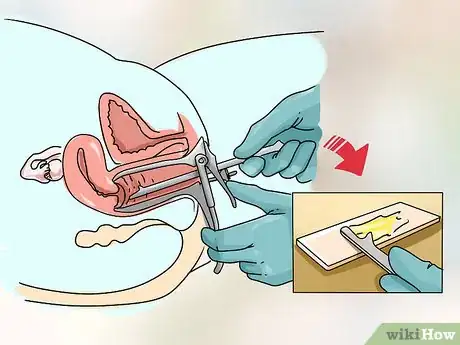

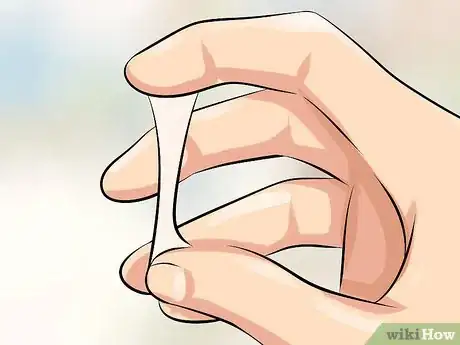

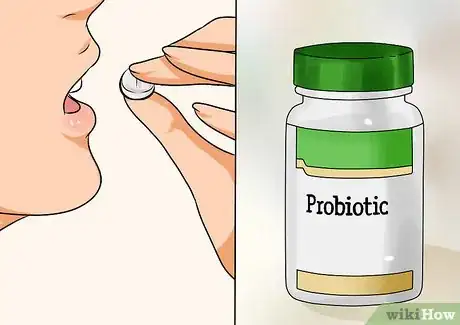

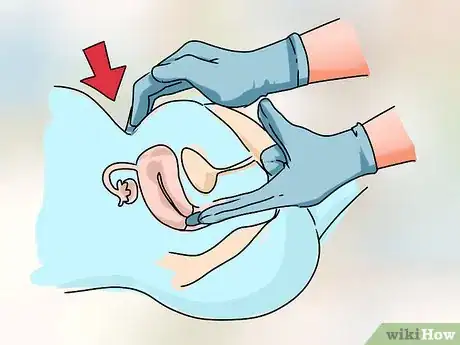
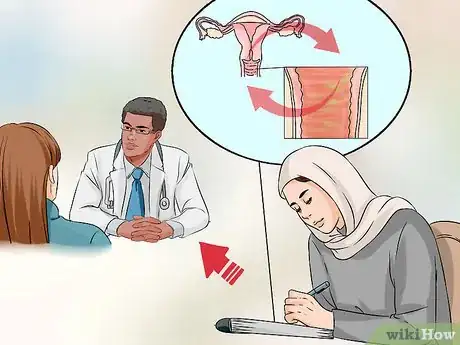
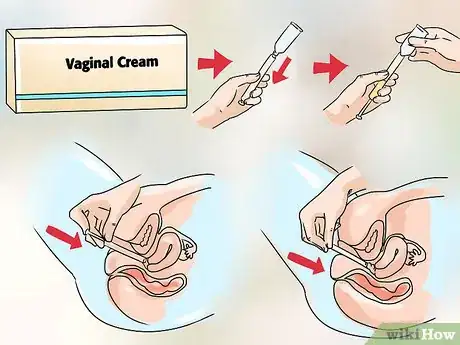




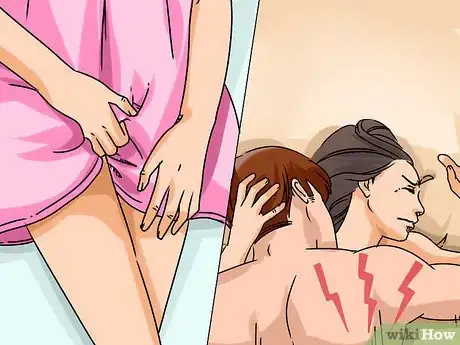
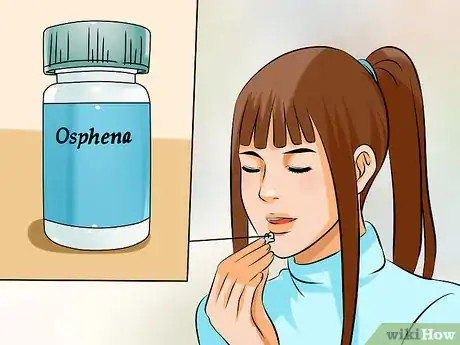
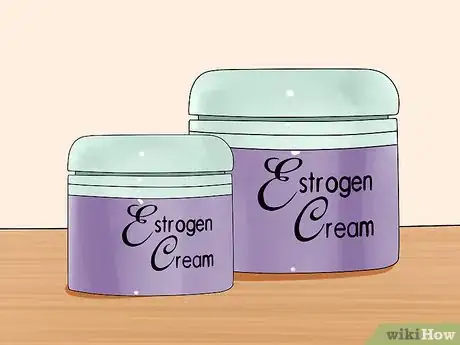

-Step-17.webp)
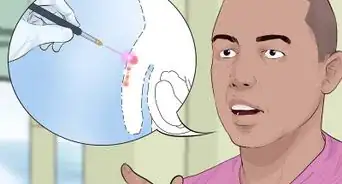

-Step-11-Version-2.webp)



-Step-10.webp)
-Step-13.webp)
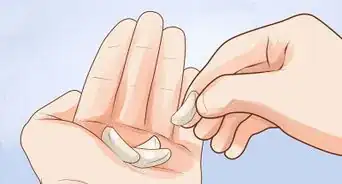
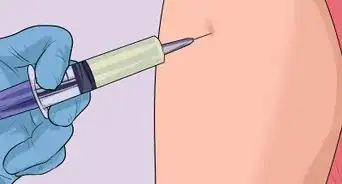
-Step-9.webp)
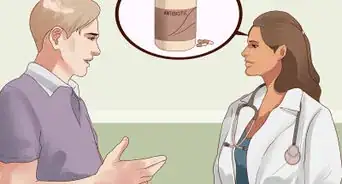
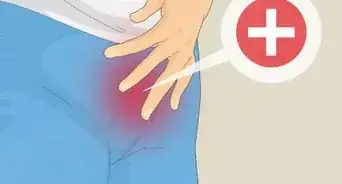








-Step-17.webp)
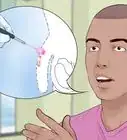
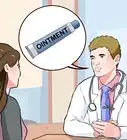
-Step-11-Version-2.webp)



































Medical Disclaimer
The content of this article is not intended to be a substitute for professional medical advice, examination, diagnosis, or treatment. You should always contact your doctor or other qualified healthcare professional before starting, changing, or stopping any kind of health treatment.
Read More...